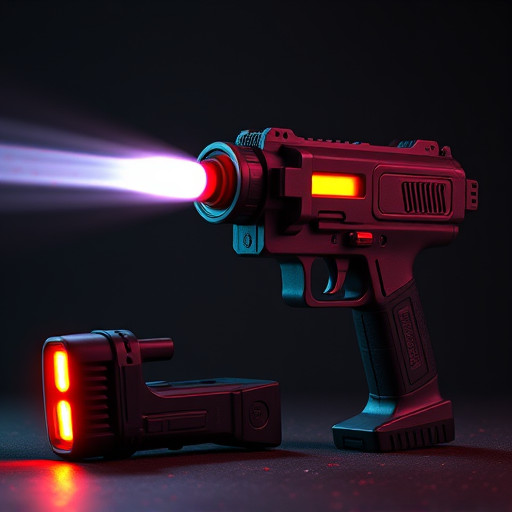Stun guns and tasers are non-lethal self-defense tools that emit electrical pulses to temporarily paralyze attackers, enhancing personal safety for men in various situations. Key considerations when choosing one include intended use, voltage, size, durability, and legal regulations, which vary across regions. Responsible ownership involves understanding local laws, proper training, de-escalation techniques, and safe storage to minimize risks while ensuring effective use in dangerous scenarios.
Stun guns and Tasers have emerged as powerful tools for personal safety, offering individuals a non-lethal means of self-defense. This comprehensive guide explores the world of stun devices, shedding light on their mechanism, benefits, and the crucial factors to consider when choosing one. From understanding the science behind their operation to navigating legalities, we equip readers with essential knowledge for informed decisions regarding personal safety.
Understanding Stun Guns and Tasers: How They Work
Stun guns and tasers are non-lethal weapons designed to temporarily incapacitate a person through electric shock. They work by delivering a strong electrical pulse that disrupts the nervous system, causing muscle spasms and loss of balance. This disruption is often enough to disable an attacker, giving the user time to escape or summon help.
The most common type of stun device is the Taser, which fires two small probes connected to cables that administer the electric shock from a distance. Stun guns, on the other hand, are handheld devices that emit an electrical discharge through a metal probe directly into the target. Both methods aim to subdue an individual swiftly and safely, minimizing the risk of permanent injury while providing personal protection for men in various situations, from self-defense to law enforcement applications.
Benefits of Carrying a Stun Gun for Personal Safety
Carrying a stun gun or taser can significantly enhance personal safety for men, providing a non-lethal means to deter and incapacitate potential attackers. These devices emit an electric charge that temporarily paralyses the target, allowing the user to escape dangerous situations. This is particularly beneficial in areas with high crime rates or for individuals who frequently find themselves alone or in unfamiliar surroundings.
Unlike conventional weapons, stun guns and tasers are designed to minimise injury and do not require users to aim precisely, making them accessible to people of varying skill levels. They offer a sense of empowerment, encouraging potential assailants to think twice before attacking. This simple act of carrying such a device can serve as a powerful deterrent, promoting a safer environment for daily activities.
Choosing the Right Stun Gun: Factors to Consider
When considering a stun gun or taser, several key factors come into play to ensure you choose the right one for your needs. First, evaluate the intended use case: self-defense in close quarters or personal protection while traveling. This will help narrow down the appropriate voltage and pulse width, with higher voltages generally suited for neutralizing an aggressor quickly. Additionally, consider the size and ease of carry; compact models are ideal for everyday concealment, while larger devices might be better for occasional use.
Weight is another critical aspect, as lighter options offer greater mobility without becoming cumbersome. Always examine the device’s durability, especially if it will be stored in a vehicle or carried daily. Water resistance can be beneficial, ensuring protection from accidental exposure to moisture. Moreover, familiarizing yourself with the stun gun’s safety features and user-friendly design is vital for confident and reliable deployment.
Legal Implications and Safety Guidelines for Stun Gun Owners
Stun guns and tasers, though powerful tools for self-defense, come with a set of legal implications that all owners must be aware of. The legality of possessing and carrying stun devices varies significantly across different countries and states. It is crucial to research and comply with local laws to avoid any legal repercussions. Some areas may require permits or registration, while others might have restrictions on the power output or the types of users allowed to possess such devices.
Safety guidelines are equally important for responsible stun gun ownership. Users should undergo proper training to ensure safe handling and reduce the risk of accidental injuries. Stun guns should only be used as a last resort when facing imminent physical danger. It is recommended to familiarize yourself with de-escalation techniques and understand when and how to deploy the device effectively. Additionally, keeping stun guns out of reach of children and ensuring proper storage can significantly mitigate potential hazards.
